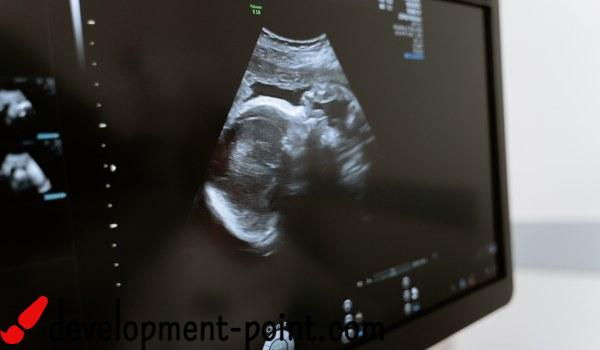Different methods of treating uterine fibrosis
There is no one way to treat uterine fibrosis, but there are many treatment options, and these options include herbal, food, and medication as well. Continue reading the following article to know the different treatment methods for uterine fibroids.
Treatment of uterine fibrosis by waiting and watching
There are many women with uterine fibroids who don’t have any signs or symptoms, so if you’re in this category, watchful waiting may be your best option.
Some women may worry about this option, but fibroids are not cancerous and rarely interfere with pregnancy. They usually grow slowly and sometimes not at all, and they tend to shrink after menopause.
And to know more information about uterine fibrosis, what are the reasons for its occurrence? What are the risks if it interferes with pregnancy? Read our article on uterine fibroids.
Medication treatment of uterine fibrosis
This type of treatment for uterine fibrosis targets the use of hormone medications that regulate the menstrual cycle and treat certain symptoms, such as heavy menstrual bleeding.
Medications do not eliminate fibroids, but they may shrink them. They include:
1. Gonadotropin-releasing hormone (GnRH) agonists
These medications treat fibroids by blocking the production of estrogen and progesterone, which is similar to the temporary menopause. As a result, menstruation stops, the fibroids shrink, and the anemia may also improve.
GnRH agonists are usually used for no longer than three to six months; Because symptoms return when the medication is stopped, and long-term use can cause bone loss.
Your doctor may use GnRH agonists to shrink fibroids before a planned surgery or to help with the transition to menopause.
2. Tranexamic acid
This non-hormonal active substance is used; To relieve heavy menstrual periods, and medicines that contain it are taken only on days of heavy bleeding.
3. IUD
A progestin-releasing IUD may be used to relieve heavy bleeding caused by fibroids, so it only helps relieve symptoms, does not make fibroids shrink or disappear, and prevents pregnancy.
Other medications
The doctor may recommend some other medications, such as:
- Oral contraceptives, which help control menstrual bleeding, but do not reduce the size of the fibroid.
- Nonsteroidal anti-inflammatory drugs (NSAIDs) may be effective in relieving pain associated with uterine fibroids, but they don’t reduce bleeding from fibroids.
- If you suffer from severe bleeding and anemia, your doctor may suggest taking vitamins and iron.
Treating uterine fibrosis with food
Diet changes as well as lifestyle changes may help treat and relieve fibroids, as well as prevent them.
Some studies in China have shown a relationship between weight gain and the risk of uterine fibroids, and this happens because fat cells make a large amount of estrogen, and thus losing weight may help prevent or reduce fibroids.
However, it should be noted that this method of treatment may or may not help treat fibroid symptoms. Because this depends on how severe your symptoms are and how advanced your uterine fibrosis is; Therefore, you should talk to your specialist doctor before trying the treatment method, and these foods include the following:
Foods to avoid
According to studies, eating a lot of red meat increases the risk of developing fibroids, in addition to consuming excess carbohydrates and sugars that stimulate or exacerbate fibroids.
These foods raise blood sugar levels, which causes your body to release more of the hormone insulin. So you should avoid the following foods:
- White Rice.
- Pasta and flour.
- Soda and other sugary drinks.
- Bakery (cakes and biscuits).
- Potato Chips.
- crackers.
Allowed foods
Foods rich in fiber help curb appetite, balance hormones, and prevent weight gain as well. In addition, fruits and vegetables help reduce the risk of fibroids. Foods that are good for your health include:
- Raw and cooked vegetables.
- dried fruit.
- All cereal.
- brown rice.
- Lentils and beans.
- Whole grain bread.
- quinoa.
Treatment of uterine fibrosis with herbs
Herbs may help treat fibroids or reduce their symptoms, but more research is needed to find out if these treatments work and what the appropriate dose should be.
It should be noted that herbs may interact with other medications, so you should talk to your doctor before taking any herbs. Herbal therapies include the following:
Chinese herbal remedies
Chinese medicine treatments are used to slow fibroid growth, treat symptoms, and keep hormone levels in balance, as well as a healthy uterus, such as:
- Romulus cinnamomi.
- Poria.
- Paeonia lactiflora.
- Paeonia × suffruticosa (cortex moutan).
Green tea
The bioflavonoids in green tea may help reduce the size and number of fibroids, which may be due to its ability to reduce inflammation and detoxify the body.
Chasteberry supplements
Chasteberry supplements are taken in cases of heavy menstrual bleeding, menstrual pain, in addition to other symptoms, as these herbal supplements help balance hormone levels within the body.
Spaghetti husks and castor oil
These herbs are used as natural laxatives. Add these herbs to water or juice; To help relieve constipation.
Medical procedures to treat uterine fibrosis
In most cases, uterine fibrosis and its symptoms are treated with hormonal medications, ultrasound therapy, surgery, and other treatments. Medications help shrink fibroids or relieve symptoms, and surgery may involve removing only the fibroids or the entire uterus.
Some other procedures that may be used in cases of uterine fibrosis include:
- MRI-guided focused ultrasound surgery.
- Uterine artery embolization, which works to prevent blood from reaching the fibroids and the uterus.
- Rhabdomyolysis, which is removal with a heat source.
- Cryomyolysis removal of fibroids.
- Myomectomy, which is surgery to remove only fibroids.
- Hysterectomy, which is the surgical removal of the uterus.
In the end, the effectiveness of uterine fibrosis treatment depends on your age, health, and lifestyle, in addition to the number, size, and location of fibroids. Based on that, your doctor will determine the appropriate treatment for you and whether physical therapy is appropriate for you in the first place or not.

